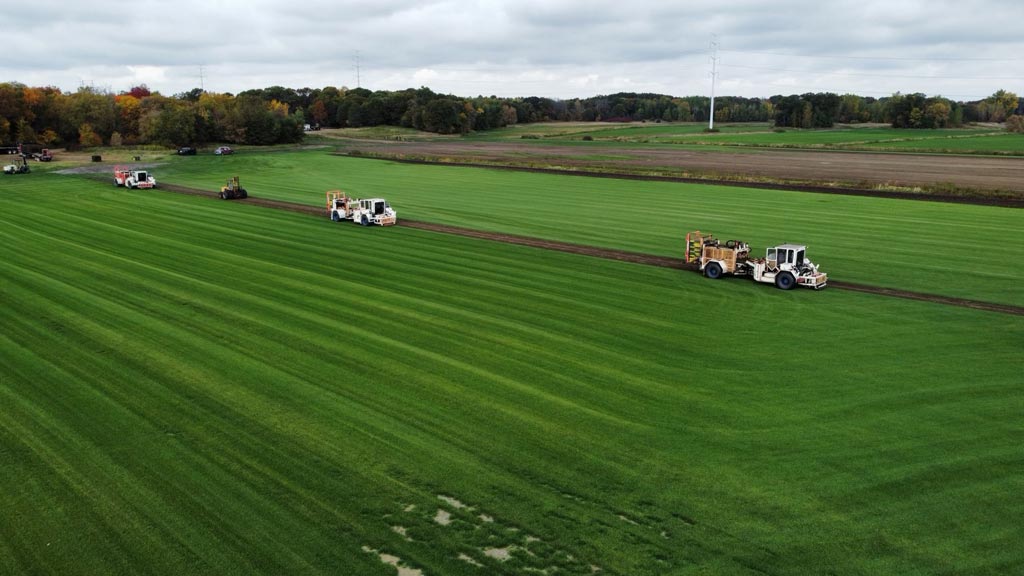How to Estimate your Yard
How to Install Sod
- For new lawns: Grade and rake soil to desired contour. For sandy or porous soil, 2 to 4 inches of black dirt or top soil is recommended.
- For repairing an existing lawn: Sod needs soil to root into. Old vegetation should be removed so bare soil or mostly bare soil remains. If you have quack grass it would be best to use an herbicide to kill it before putting in new sod. It is very aggressive and if some of the under-ground stem of the plant remains, a new plant can form and can come up through the new sod. Grade or rake soil to desired contour.
- We recommend the use of a starter fertilizer. It should have a low percentage of nitrogen and higher percentage of phosphorus, or an even percentage of nitrogen, phosphorus and potash. Rake or till the fertilizer into the soil before installing the sod.
- Install the sod immediately. Start along the house, driveway, or curb. Keep the seams tight as you install but, not overlapping. Stagger the end seams. If you are installing on a slope, lay the sod across the slope, not down the slope. On steeper slopes, you may wish to staple or stake the sod.
- Trimming around trees, sidewalks and other obstructions may be done with a knife.
- Begin watering as soon as you have a large enough area installed so that you don’t get wet while finishing the installation.
- With the soil moist, rolling is recommended to assure good contact with the soil and to smooth out lumps. The amount of water depends on the weather. Hotter and windier conditions will require more water than cooler calmer conditions.
- Watering should continue until the sod roots down. This will take 1 to 2 weeks. Keep sod constantly moist to where the soil underneath is damp.



